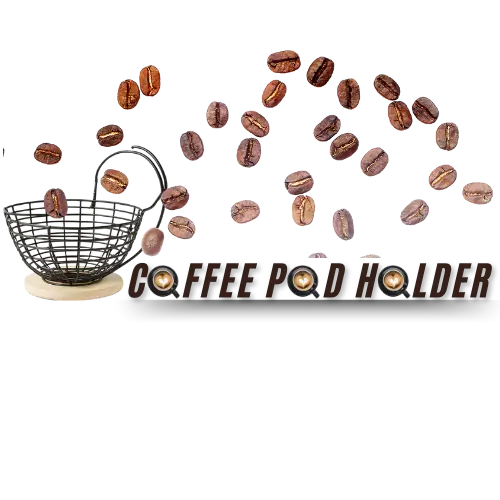Coffee Pods vs Ground Coffee: Which Is Right for You?
Coffee Pods vs. Ground Coffee: Which Is Right for You? Whether it’s that first cup in the morning to jump-start your day or a cozy afternoon pick-me-up, how you make your coffee plays a big role in the experience. That’s where the debate of coffee pods vs. ground coffee comes in. Understanding which option suits your lifestyle, taste preferences, and values can make your coffee ritual even more enjoyable—and ensure every cup is just the way you like it.
Coffee is a beloved hot drink that energies millions of people around the world every day. It’s not just about the caffeine; it’s about the aroma, the flavors, the rituals, and the satisfaction of that perfect cup. But when it comes to brewing coffee at home, one big question comes up: Should you use coffee pods or ground coffee?Choosing between coffee pods and ground coffee can be tricky because both have their pros and cons.
This article will help you understand the differences, advantages, and disadvantages of both options, so you can decide which is best for your lifestyle, taste preferences, and budget.

What is the difference between Coffee Pods and Ground Coffee?
| Feature | Coffee Pods | Ground Coffee |
|---|---|---|
| Convenience | Extremely convenient and fast | Requires more time and effort |
| Cost | More expensive per cup | Cheaper in the long run |
| Flavor | Consistent but less complex | Richer, more customizable flavors |
| Environmental Impact | Often wasteful (unless recyclable) | More eco-friendly, compostable grounds |
| Equipment | Requires a pod machine | Can be brewed with various methods |
| Customizability | Limited options | Fully customizable |
What Are Coffee Pods?
Coffee pods are small pre-packaged portions of ground coffee grounds designed to work with pod coffee machines such as Keurig or Nespresso. Each pod comes packed in either plastic or aluminum container and sealed for freshness; all that’s required to enjoy instantaneous java is popping the pod in, pressing a button, and waiting just a moment longer!
Coffee Pod Benefits Convenience
Coffee pods offer immense convenience. No longer do you have to measure out or deal with filters – simply insert one into your machine, select your pod, and let the machine do its work – ideal for busy mornings or times when time is of the essence! They’re especially great when rushing off in a rush.
Consistency mes Each pod holds the same amount of coffee, so your cup will always taste the same – there’s no guesswork involved!
What Is Ground Coffee?
Coffee ground is the oldest method of making coffee. It’s created by grinding roast coffee beans until they reach a certain size. You can purchase ground coffee in the store, you can grind them yourself at home. To make ground coffee you’ll require equipment such as drip coffee maker French presses, and pour-over set-up.
Benefits of Ground Coffee
Cost-effectiveGround coffee is typically less expensive as compared to coffee pods. It is possible to make several cups of coffee with one bag, and save the Money in the long run.
Drawbacks of Ground Coffee
Which Option Is Right for You?
The choice between ground and coffee pods coffee will depend on your needs and priorities. Here’s a guide to help you choose:

Choose Coffee Pods If:
- You appreciate speed and convenience.
- You don’t want to be dealing with measuring coffee, or cleaning up.
- You enjoy trying new types and flavors of coffee.
- You’re fine with spending an extra amount to make it easier.
Coffee pods are great for those who have a busy schedule or just those who need a quick, easy beverage in the early morning.

Choose Ground Coffee If:
- You’re a lover of coffee and enjoy experimenting with different methods of brewing.
- You’d like to save cash in the long-term.
- You care about the planet and would like to reduce the amount of waste.
- You love the process of making coffee, and are willing to spend a bit of time with it.
Ground coffee is a great choice for those who appreciate the art of coffee making and would like to tailor the flavor of their coffee according to personal preference.
Can You Use Both?
Absolutely! There’s no law that states you must select one over the others. Many people make use of coffee pods in the week to make it easier and then switch to ground on weekends, when they have time to relax and enjoy the process of brewing. Making both choices at home lets you enjoy the most beneficial of both.
Tips for Making the Most of Each Option: Coffee Pods vs Ground Coffee
Here are some of the best ways to store your coffee pods:
For Coffee Pods:

For Ground Coffee:

Comparing Brewing Methods: Coffee Pods vs. Ground Coffee
When it comes to making coffee the method you choose can have a significant impact on the flavor, convenience as well as the overall experience. Ground coffee and coffee pods depend on a variety of systems of brewing, each having distinct process tools, methods, and outcomes. Let’s look at how the brewing techniques for ground coffee and coffee pods are compared.
Brewing Coffee Pods
Coffee pods are created for compatibility with certain machines, for example, Keurig, Nespresso, or other pod-based systems. The coffee brewing process operates:
How It Works
Pros
Cons
Brewing Ground Coffee
Ground coffee is available in a selection of brewing methods and each one offers distinct flavor and profile. Here’s a brief overview of several of the well-known methods of brewing ground coffee:
1.Drip Coffee Maker
How It Works
The process is to add ground coffee to the paper or filter that is reusable and pour the water into the reservoir of the machine and press the start button. The machine warms the water before dripping it through the coffee grounds before transferring it into the carafe.
Pros
Cons
2.French Press
How It Works
The process is to add coarsely ground coffee into the French press Pour hot water in, then stir and let it infuse for four minutes. Then, push the plunger downwards to separate grounds from coffee.
Pros
Cons
3.Pour-Over (e.g., Chemex or Hario V60)
How It Works
The process is simple: place the filter in the pour-over machine, add medium-ground coffee and gradually pour boiling hot water on the coffee grounds in an upward motion. The coffee dribbles out into the cup or carafe below.
Pros
Cons
4.Espresso Machine
How It Works
Utilize finely ground coffee, place it in the portafilter and then let the machine push warm water into the cup at extreme pressure, resulting in an intense shot of espresso.
Pros
Cons
5.Moka Pot (Stovetop Espresso)
How It Works
The lower chamber with water, include finely ground coffee in the middle filter and set your pot over the fire. When the water is heated steam pressure pulls it over the ground coffee, creating the most concentrated coffee brew.
Pros
Cons
6.Cold Brew
How It Works
Mix coarsely ground coffee and cold water in the form of a pitcher or jar and allow it to sit in the refrigerator over 12 – 24 hours. Strain the mix to separate the coffee grounds and serve with an ice cube.
Pros
Cons
Conclusion
In short, the decision between ground coffee and coffee pods is the individual’s preference. Coffee pods are a great way to get efficiency and consistency, whereas ground coffee offers rich flavor as well as flexibility, customization, and price. Take into consideration your budget, lifestyle and personal preferences prior to making your decision.
Whether you decide to go with ground coffee, coffee pods or a blend of both what is most crucial is to enjoy your coffee in the way you prefer it. In the end, coffee ought to be enjoyed and appreciated! So, pour that next coffee, lie back and relax, and revel in the amazing world of coffee.

